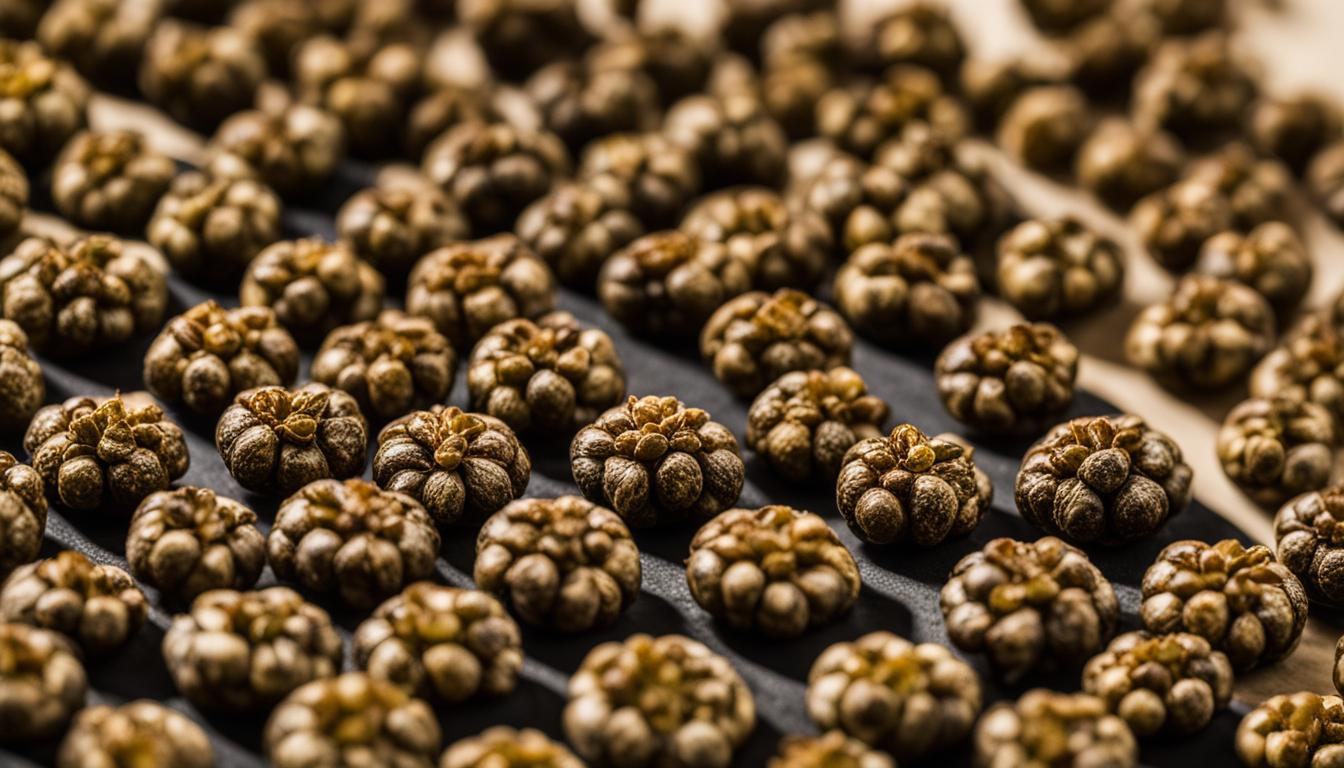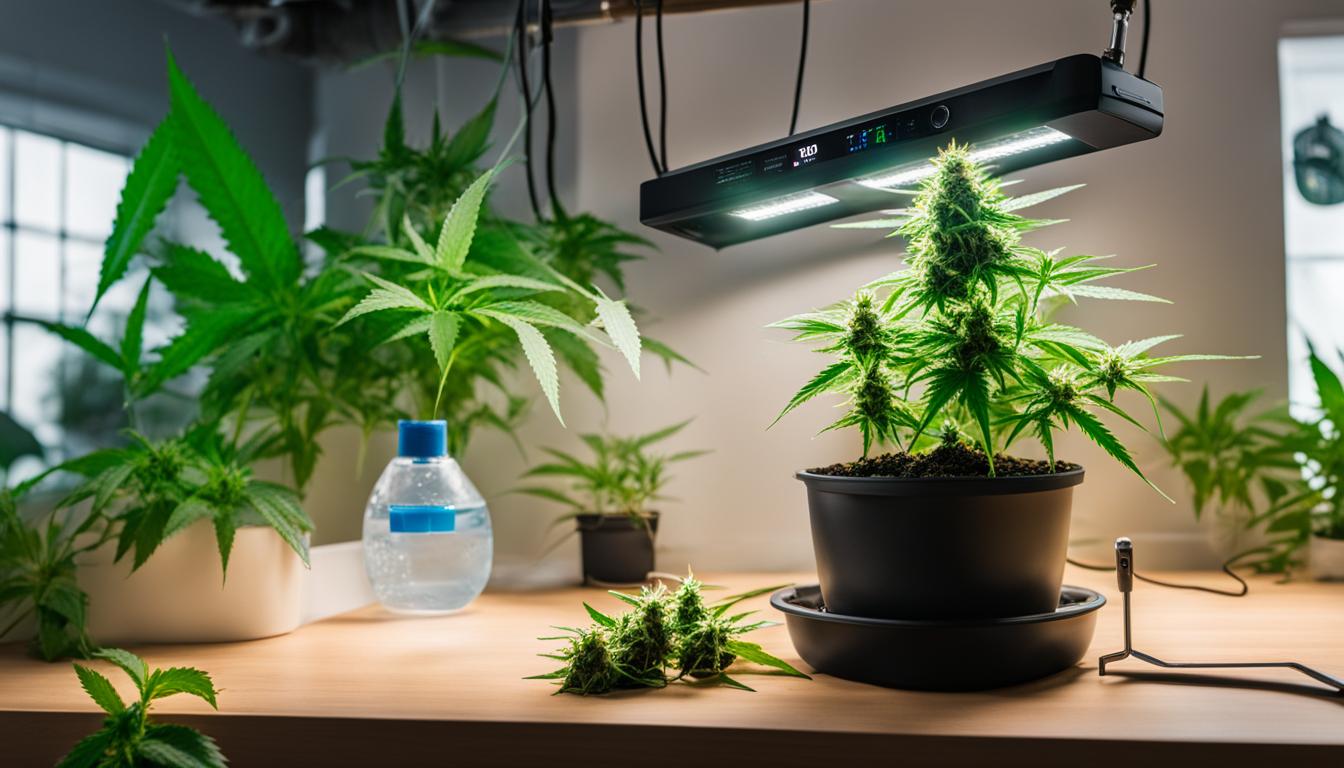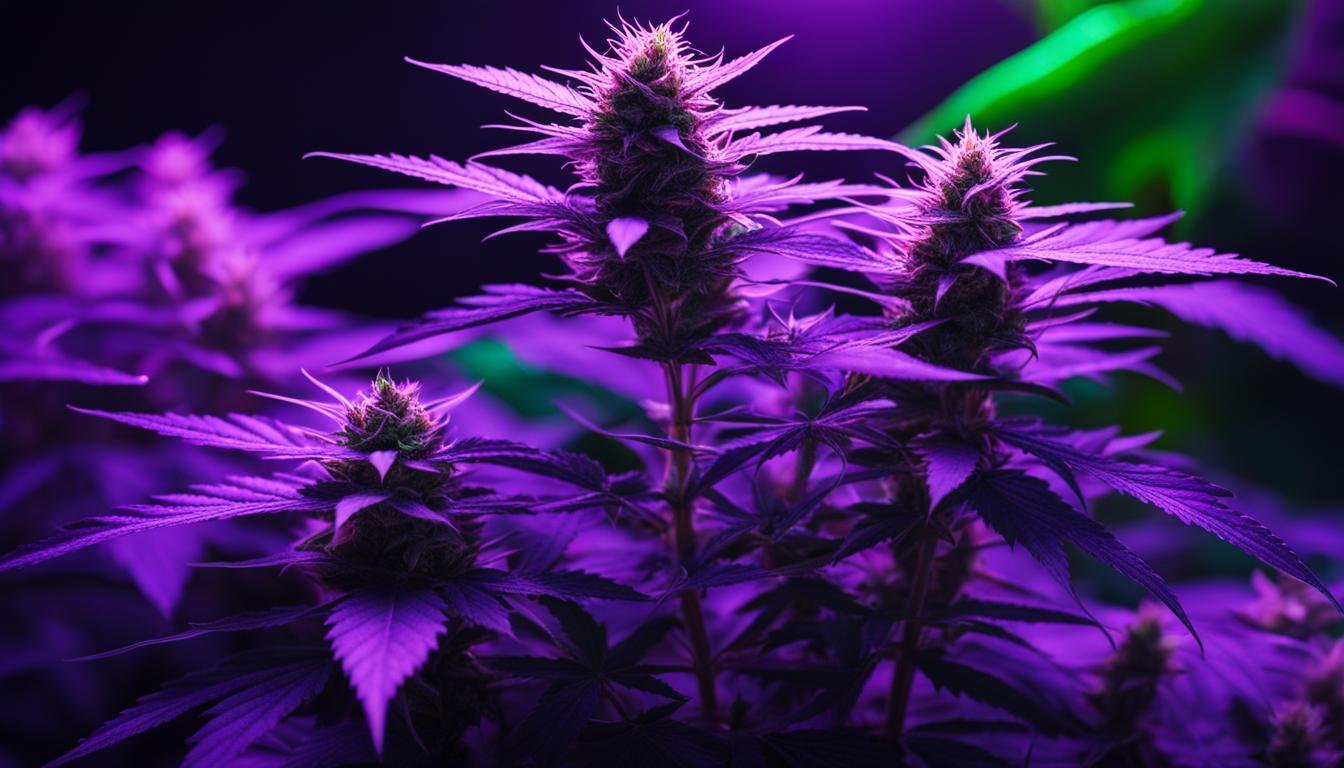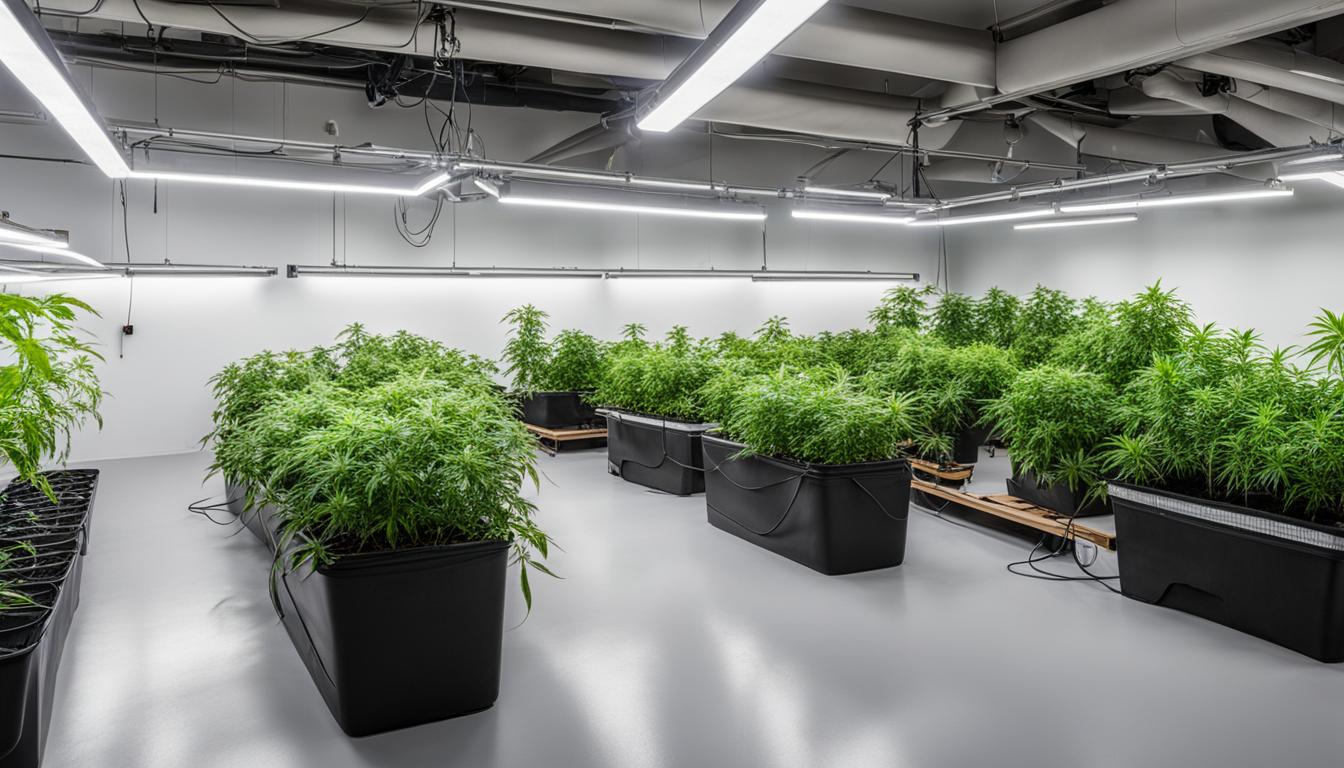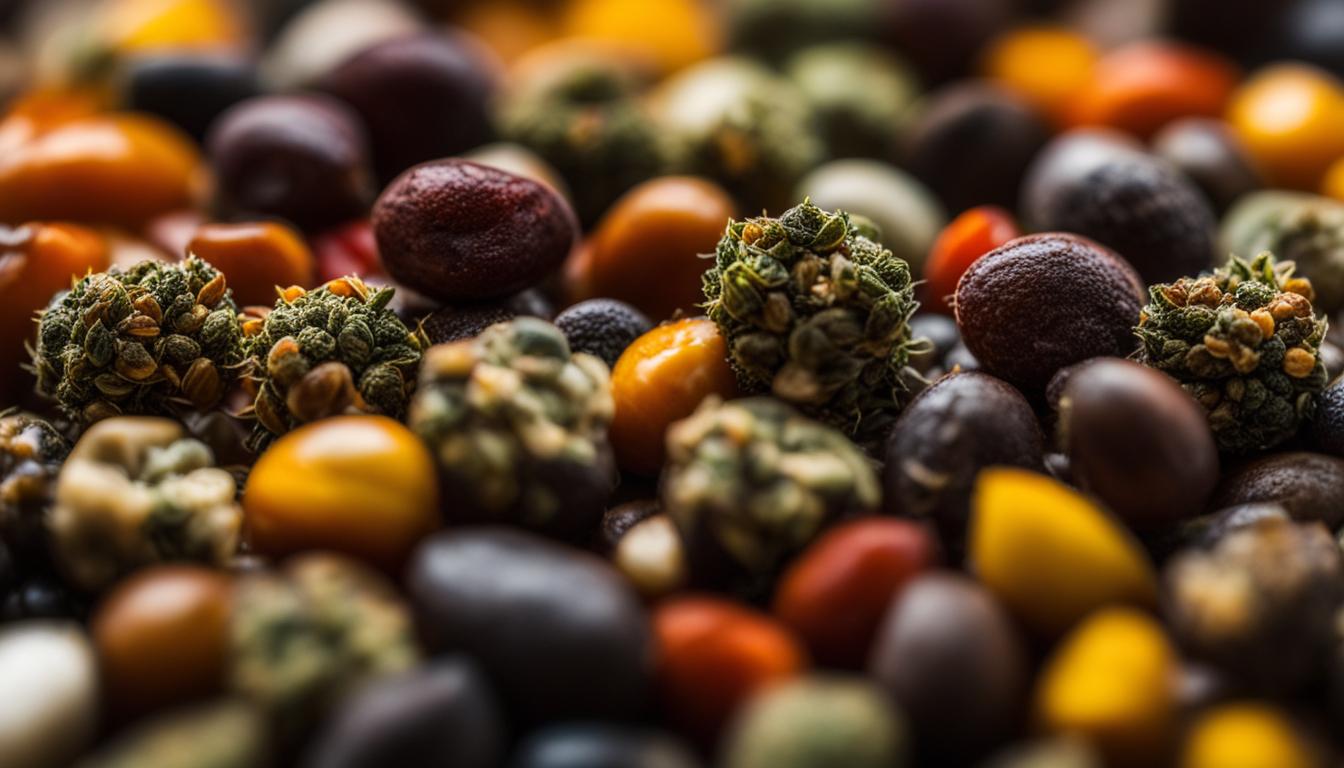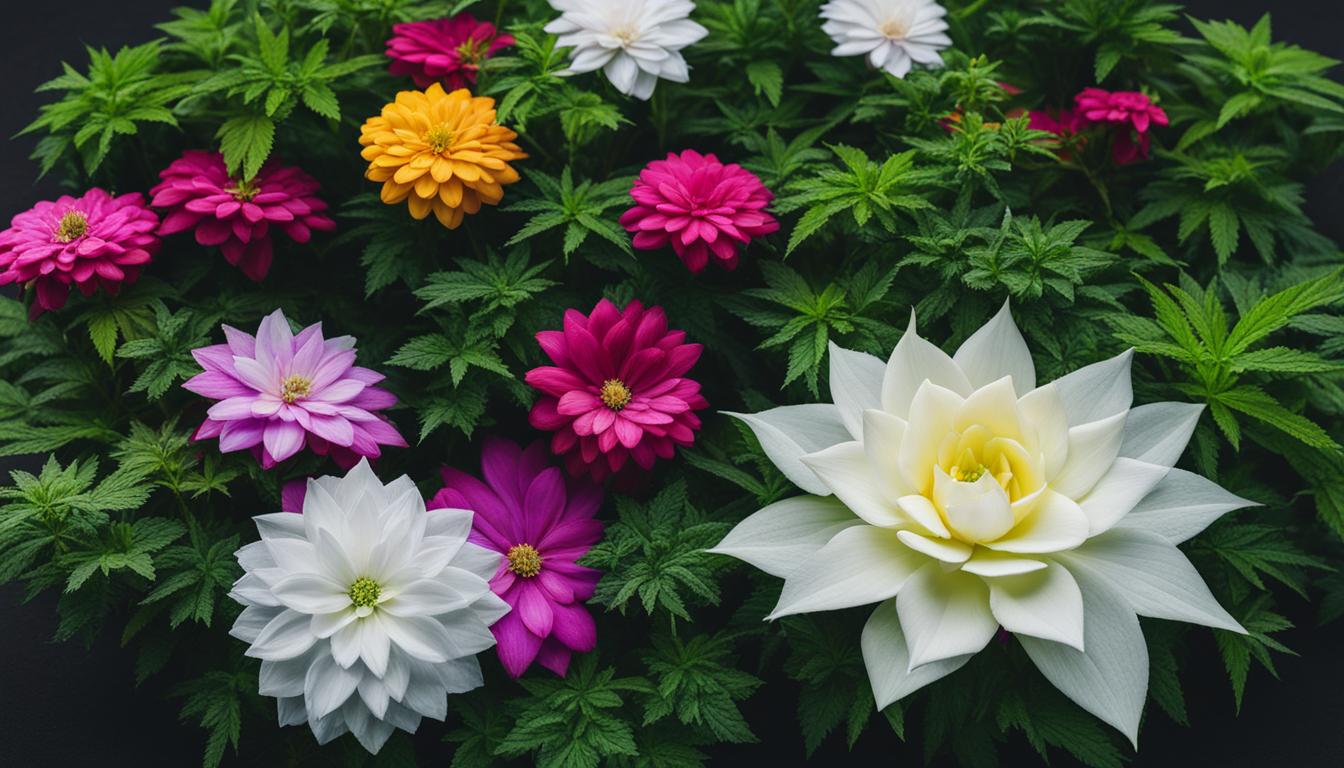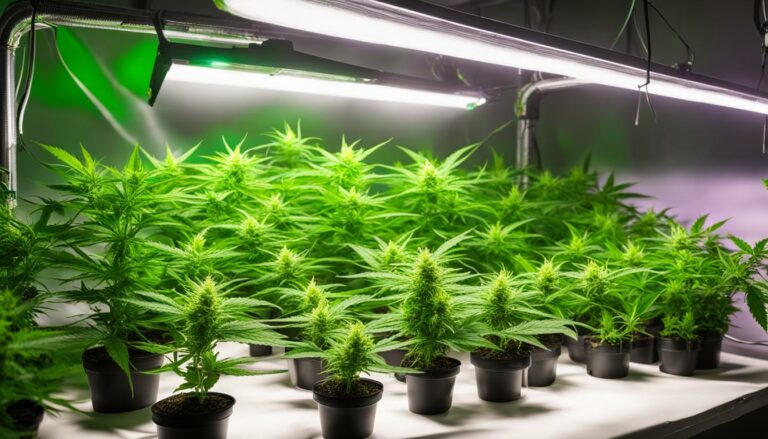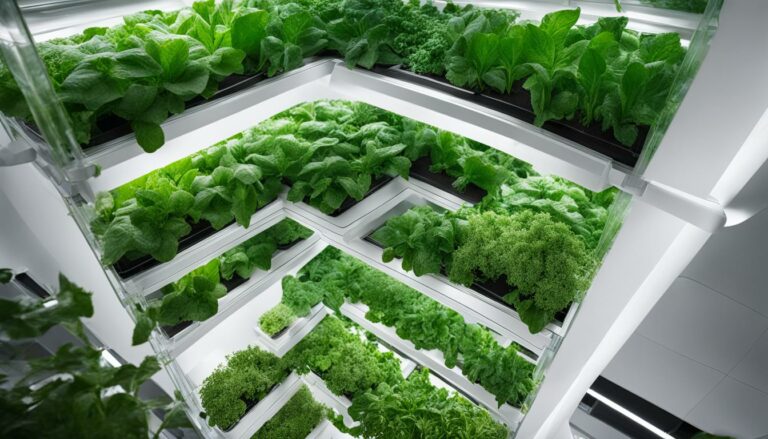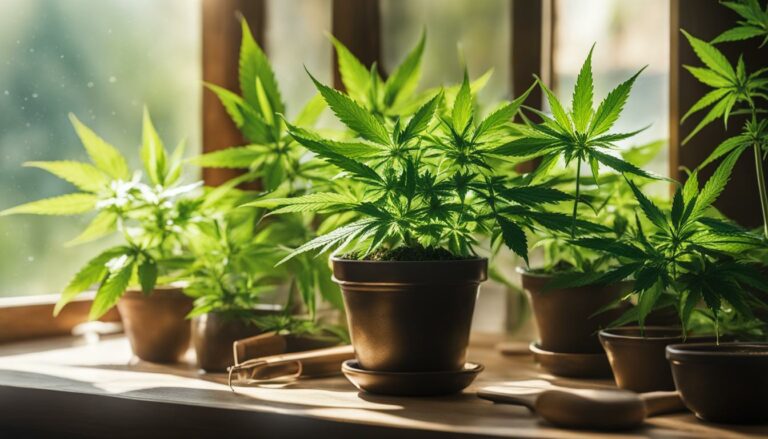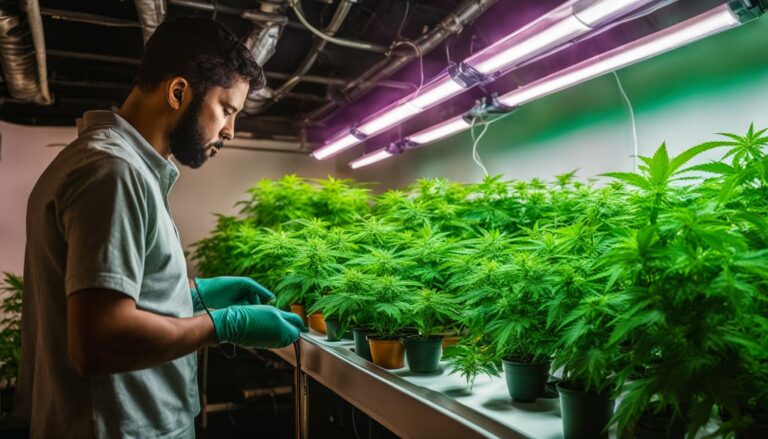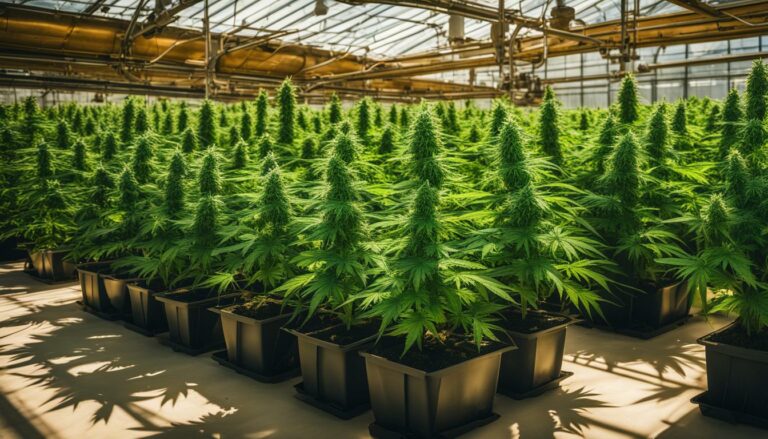Autoflowering vs. Feminised Cannabis Seeds – Uncovering the Differences
Welcome to our comprehensive guide on autoflowering and feminised cannabis seeds. If you’re a grower or someone interested in starting your own cannabis garden, understanding the differences between these two types of seeds is crucial. In this article, we will explore the distinctions between autoflowering and feminised seeds, including their growth patterns, cultivation requirements, yield potential, and more.
Autoflowering cannabis seeds are known for their easy and fast-growing capabilities, making them an ideal choice for beginners. These seeds have a genetic adaptation that allows them to automatically transition from the vegetative phase to the flowering stage based on their age, rather than the lighting schedule. With a relatively short life cycle and resilience to temperature fluctuations and pests, autoflowering seeds offer a convenient and rewarding option for growers.
On the other hand, feminised cannabis seeds have been selectively bred to eliminate the presence of male plants. This ensures that every seed will develop into a female plant, eliminating the need for growers to identify and remove male plants. Although feminised seeds have a longer life cycle and require specific lighting schedules to induce flowering, they have the potential to produce higher yields and more potent flowers.
By understanding the differences in growth patterns, cultivation requirements, and yield potential, you can make an informed decision on which type of cannabis seed is best suited for your needs. Whether you choose autoflowering or feminised seeds, both offer unique advantages and considerations. Stay tuned as we delve deeper into each aspect in the upcoming sections of this article.
Autoflowering Cannabis Seeds: The Fast and Easy Choice for Beginners
When it comes to growing cannabis, autoflowering seeds are the perfect choice for beginners and those looking for a hassle-free experience. These seeds have a unique genetic adaptation that allows them to transition from the vegetative phase to the flowering stage based on their age, rather than relying on specific lighting schedules. This makes them incredibly easy to grow, as you don’t need to worry about adjusting light cycles or any special techniques.
One of the main advantages of autoflowering seeds is their speed. These plants have a relatively short life cycle and can go from seed to harvest in as little as 8-10 weeks. This means you can enjoy the fruits of your labor much sooner compared to other cannabis varieties. Additionally, autoflowering seeds are known for their resilience to temperature fluctuations and pests, making them a great option for outdoor cultivation, especially in unpredictable climates.
While autoflowering seeds may have a smaller size and lower yield potential compared to feminized seeds, they offer a convenient and rewarding option for beginners. You can expect compact plants that are easier to manage and require less space. The smaller size also makes them suitable for indoor growers with limited room. So, if you’re a beginner or just want a straightforward cannabis growing experience, autoflowering seeds are the best choice for you.
Feminized Cannabis Seeds: Maximizing Yields and Potency
Feminized cannabis seeds have gained popularity among growers due to their ability to produce high yields and potent flowers. These seeds are selectively bred to eliminate the presence of male plants, ensuring that every seed will develop into a female plant. By removing the possibility of male pollination, growers can focus their attention on cultivating robust and resinous buds.
One of the key advantages of feminized seeds is their potential for higher yields compared to autoflowering seeds. With careful cultivation techniques and optimal growing conditions, feminized plants have the capacity to produce medium to high yields of top-quality cannabis. This increased yield potential, combined with the absence of male plants, allows growers to maximize their harvest and achieve a more efficient use of resources.
In addition to higher yields, feminized plants are known for their potency. The flowers produced by feminized plants are generally more resinous and contain higher concentrations of THC and other cannabinoids. This makes feminized strains ideal for those seeking a more potent and impactful cannabis experience. By selecting premium feminized genetics, growers can ensure that their plants will produce high-quality flowers with exceptional potency.
| Advantages of Feminized Cannabis Seeds | |
|---|---|
| 1. Higher yield potential compared to autoflowering plants | |
| 2. Potent and resinous flowers with higher THC concentrations | |
| 3. Elimination of male plants for a more efficient use of resources |
“Feminized cannabis seeds offer growers the opportunity to cultivate high-quality genetics and achieve impressive yields of potent flowers.” – Expert Grower
Choosing feminized seeds allows growers to cultivate consistent and high-quality genetics. Not only do these seeds eliminate the need for identifying and removing male plants, but they also provide the option to clone plants. Cloning feminized plants allows growers to replicate desired traits and maintain a consistent genetic profile in their cultivation. This is especially beneficial for those looking to establish a strain or preserve specific characteristics.
Comparing Growth Differences: Autoflowering vs. Feminized
Autoflowering and feminized cannabis seeds have distinct growth patterns and requirements. Understanding these differences is essential for choosing the right seed type for your cultivation goals.
Growth Patterns
Autoflowering plants differ from feminized plants in their growth patterns. Autoflowering seeds have a shorter vegetative growth period and automatically transition from the vegetative phase to the flowering stage without the need for a specific lighting schedule. This fast-flowering characteristic makes autoflowering plants ideal for those looking for quick results.
Feminized plants, on the other hand, have a longer vegetative growth period and require manual adjustment of lighting to induce flowering. This longer time in the vegetative stage allows feminized plants to grow larger and offers more flexibility in pruning and shaping, making them suitable for those who prefer a more hands-on approach to cultivation.
Size and Space
Autoflowering plants typically remain smaller in size compared to feminized plants. The compact nature of autoflowering plants makes them ideal for growers with limited space or those who want to keep their cultivation discreet. On the other hand, feminized plants have the potential to grow taller and may require more vertical space to accommodate their height.
Control and Flexibility
Choosing between autoflowering and feminized seeds also involves considering factors such as growth difficulty, the number of crops that can be grown in a year, and the ability to control plant development. Autoflowering plants offer simplicity and ease of cultivation, with less emphasis on photoperiod management. They are a popular choice for growers who want a straightforward growing experience and multiple harvests per year.
Feminized plants, on the other hand, require more precise control of lighting schedules to induce flowering. This means that growers have more control over the timing of their harvests and can manipulate the growth and development of their plants to achieve desired results. However, this level of control and flexibility also requires more knowledge and experience.
| Autoflowering | Feminized | |
|---|---|---|
| Vegetative Growth Period | Shorter | Longer |
| Flowering Initiation | Based on age | Dependent on lighting schedule |
| Size | Compact | Potentially taller |
| Control and Flexibility | Less control, multiple harvests | More control, precise timing |
Morphological Differences: Understanding the Appearance of Autoflowering and Feminized Plants
When it comes to appearance, autoflowering and feminized plants have noticeable differences. Autoflowering plants tend to stay relatively short, usually not exceeding 1 meter in height. This compact size makes them suitable for growers with limited space or those looking for discreet cultivation options. The smaller stature of autoflowering plants can also be advantageous for outdoor growers who want to keep their plants inconspicuous. Despite their smaller size, autoflowering plants can still produce impressive yields and high-quality buds.
On the other hand, feminized plants have the potential to grow taller and offer more options for pruning and shaping. With careful cultivation techniques, feminized plants can reach heights of 2 meters or more. The ability to control the size and shape of feminized plants allows growers to optimize their cultivation space and maximize their yield potential. Additionally, feminized plants often exhibit a better calyx-to-leaf ratio, making the harvesting process easier and more efficient.
When choosing between autoflowering and feminized seeds, it is important to consider the morphological differences and how they align with your specific gardening goals and limitations. If space is a concern or you prefer a more discreet cultivation approach, compact autoflowering plants may be the ideal choice. On the other hand, if you have the space and desire to cultivate larger plants with greater control over their development, photoperiod-dependent feminized strains may be more suitable for your needs.
| Autoflowering Plants | Feminized Plants | |
|---|---|---|
| Height | Short, usually not exceeding 1 meter | Taller, can reach heights of 2 meters or more |
| Pruning and Shaping | Limited options for pruning and shaping | More flexibility in pruning and shaping |
| Calyx-to-Leaf Ratio | – | Better calyx-to-leaf ratio for easier harvesting |
By understanding the morphological differences between autoflowering and feminized plants, you can make an informed decision that aligns with your cultivation style and goals.
Flowering Stage: Ensuring Optimal Timing for Autoflowering and Feminized Plants
During the growth of cannabis plants, the flowering stage is a crucial period that determines the development of buds and the overall yield. The timing of the flowering stage differs between autoflowering and feminized plants, and understanding these differences is essential for successful cultivation.
Autoflowering plants have a unique characteristic of entering the flowering stage based on their age, typically around 2-4 weeks after germination. This means that autoflowering plants will automatically transition into the flowering phase, regardless of the lighting conditions. This feature allows for a quicker overall growth cycle and the potential for multiple harvests per year, especially in warmer climates.
On the other hand, feminized plants rely on specific changes in the light cycle to initiate the flowering stage. When growing feminized plants indoors, growers need to adjust the photoperiod of the grow lights to induce flowering. Outdoors, feminized strains typically begin flowering during the transition from summer to autumn when the amount of available light decreases. Understanding the timing of the flowering stage is crucial for growers to ensure optimal yields and harvest times for both autoflowering and feminized cannabis plants.
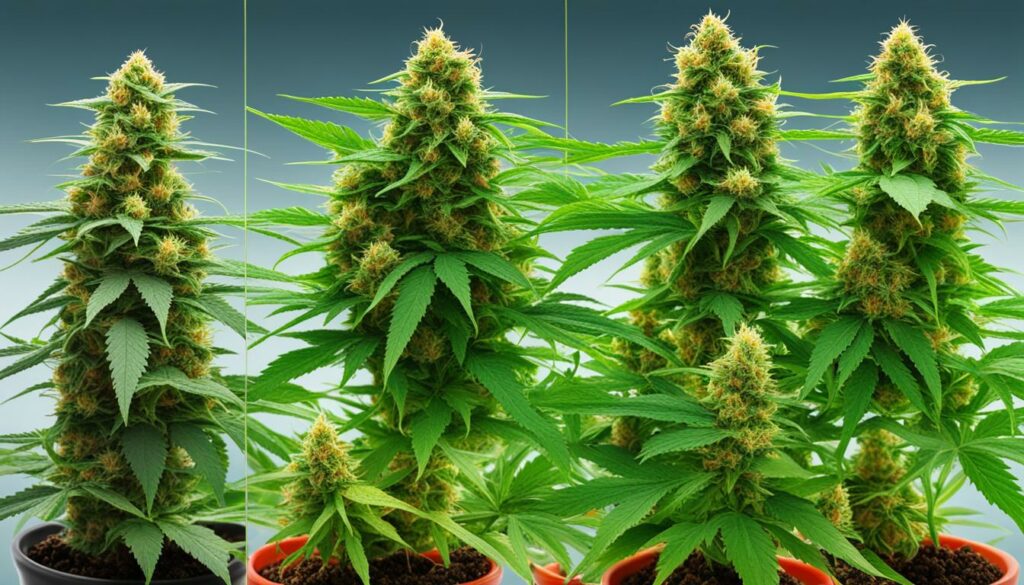
Table: Flowering Period of Autoflowering and Feminized Plants
| Plant Type | Flowering Period |
|---|---|
| Autoflowering | 2-4 weeks after germination |
| Feminized | Dependent on lighting schedule or seasonal changes |
Yield Potential: Comparing Autoflowering and Feminized Plants
When it comes to yield potential, growers often consider the differences between autoflowering and feminized cannabis plants. The yield of a plant refers to the amount of usable cannabis it produces. While both types of plants can provide rewarding harvests, there are distinct factors to consider.
Autoflowering Plants Yield
Autoflowering plants typically have a shorter overall life cycle and a smaller size compared to feminized plants. These characteristics often result in lower yields. However, it’s important to note that autoflowering strains have seen significant improvement in recent years, with breeders focusing on enhancing their yield potential. By selecting high-yielding autoflowering varieties and providing optimal growing conditions, growers can still achieve satisfying harvests.
Feminized Plants Yield
Feminized plants, on the other hand, have the potential to produce medium to high yields, especially when grown in ideal environments. With careful cultivation techniques and genetic selection, feminized plants can offer impressive harvests. They have a longer vegetative growth period, allowing for more robust and larger plants. Additionally, the ability to clone feminized plants ensures consistent genetics and further maximizes potential yields.
| Type of Plant | Yield Potential |
|---|---|
| Autoflowering | Lower yields compared to feminized plants |
| Feminized | Medium to high yields with proper cultivation |
When deciding between autoflowering and feminized seeds, it’s important to consider your cultivation goals, available space, and growing experience. While autoflowering plants may have lower yields, they offer convenience and a faster overall growth cycle. Feminized plants, on the other hand, require more attention but present the potential for higher yields. By selecting the seed type that aligns with your specific needs, you can optimize your cannabis garden for a successful harvest.
Cultivation Requirements: Simplifying the Growing Process
When it comes to cultivating cannabis, understanding the specific requirements of different seed types is essential for a successful garden. Autoflowering plants are known for their resilience and adaptability, making them a popular choice for novice growers. These plants exhibit natural resistance to temperature fluctuations, pests, and diseases, making them easier to care for and less prone to problems. Beginners can rely on the robustness of autoflowering plants to withstand common challenges that arise during cultivation, giving them a higher chance of achieving a successful harvest.
On the other hand, feminized plants require a bit more attention and expertise to cultivate. While they may be more challenging for beginners, they offer experienced growers the opportunity to produce high-quality cannabis with maximum potency and yield. Feminized plants have a longer vegetative growth period and require careful monitoring of lighting schedules to induce flowering. Additionally, they may be more susceptible to stress-related issues if not properly cared for. However, the extra effort invested in cultivating feminized plants can result in more rewarding and abundant harvests.
To summarize, autoflowering plants are characterized by their resilience and simplicity, making them an ideal choice for beginners or those seeking a more hands-off approach to cultivation. On the other hand, feminized plants require more expertise and attention but offer the potential for larger yields and higher potency. Consider your level of experience, available resources, and desired outcome when choosing between autoflowering and feminized seeds for your cannabis garden.
| Seed Type | Resilience | Cultivation Difficulty |
|---|---|---|
| Autoflowering Seeds | High | Low |
| Feminized Seeds | Medium | High |
Choosing Between Autoflowering and Feminized Seeds
When it comes to selecting the right cannabis seeds for your cultivation project, you’ll likely encounter two popular options: autoflowering seeds and feminized seeds. Each type has its own unique characteristics and advantages, making the choice a matter of personal preference and specific cultivation goals. Let’s explore the key factors to consider when choosing between autoflowering and feminized seeds.
Factors to Consider
1. Grower Experience: Autoflowering seeds are often recommended for beginners due to their resilience and ease of cultivation. On the other hand, feminized seeds may require more experience and attention to detail in terms of lighting schedules and plant care.
2. Yield Potential: Feminized seeds generally offer higher yields compared to autoflowering seeds. If maximizing your harvest is a priority, feminized seeds may be the better choice.
3. Life Cycle and Harvest Time: Autoflowering seeds have a shorter life cycle and can go from seed to harvest in as little as 8-10 weeks. This allows for multiple harvests per year, especially in regions with favorable climates. Feminized seeds have a longer vegetative growth period and require specific lighting adjustments to initiate flowering.
Choosing the Right Seeds
Ultimately, the choice between autoflowering and feminized seeds depends on your individual preferences, experience level, and cultivation goals. If you’re a beginner or looking for a hassle-free growing experience, autoflowering seeds may be the ideal choice. They offer convenience, resilience, and a shorter overall time to harvest. On the other hand, if you’re an experienced grower seeking higher yields and potency, feminized seeds may be more suitable. Consider factors such as grower experience, desired yield, and overall cultivation preferences to make an informed decision.
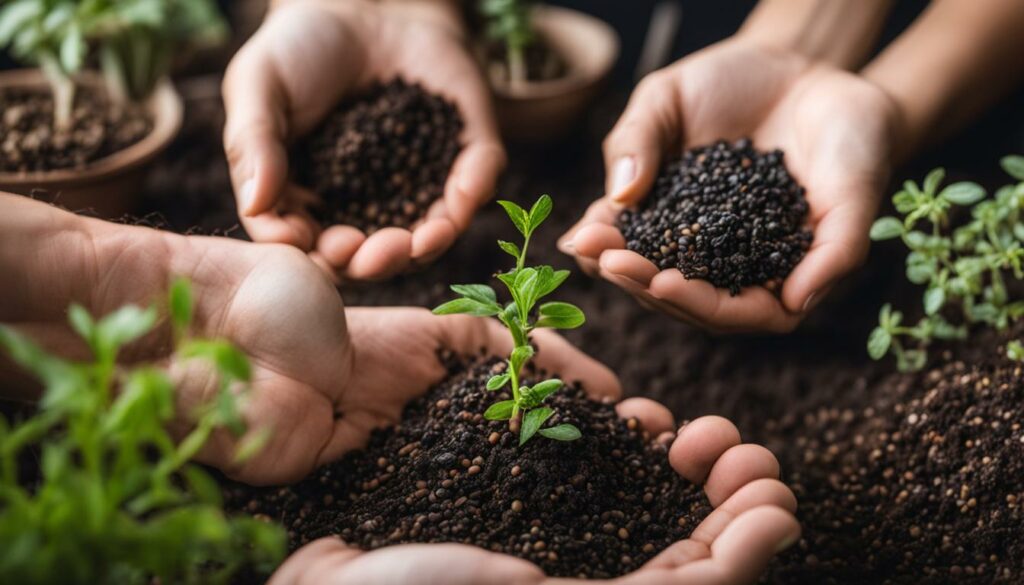
| Factors to Consider | Autoflowering Seeds | Feminized Seeds |
|---|---|---|
| Grower Experience | Recommended for beginners | May require more experience |
| Yield Potential | Relatively lower yields | Potential for higher yields |
| Life Cycle and Harvest Time | Shorter life cycle; faster harvest | Longer vegetative growth period |
Related Articles
- Autoflowering vs. Feminized Seeds: Which is Better for New Growers?
- How Do Autoflowering Cannabis Strains Differ from Regular Strains?
- What Are the Benefits of Growing Feminized Cannabis Seeds?
- Can Autoflowering Seeds Produce High-Quality Cannabis?
- How to Choose Between Autoflowering and Feminized Seeds for Your Grow?
Conclusion
After weighing the pros and cons, it is clear that the choice between autoflowering and feminized cannabis seeds ultimately depends on your personal preferences and cultivation capabilities. If you are a beginner or looking for a hassle-free growing experience, autoflowering seeds are the way to go. With their fast growth cycles, resilience to pests and diseases, and ability to thrive in various environments, autoflowering seeds offer convenience and a manageable size for smaller spaces.
On the other hand, if you have more experience and are willing to invest time and effort into your cultivation, feminized seeds can deliver higher yields and potency. Their ability to be cloned provides consistency in genetics and the potential for excellent harvests. However, feminized seeds require a longer vegetative period and proper attention to lighting schedules.
Consider your level of expertise, available space, desired yield, and growing preferences when making your decision. Whether you choose the convenience of autoflowering seeds or the potential rewards of feminized seeds, both offer unique advantages. By understanding the differences in growth patterns, cultivation requirements, and yield potential, you can make an informed decision that aligns with your goals and maximizes the success of your cannabis garden.
FAQ
What are the advantages of autoflowering cannabis seeds?
Autoflowering seeds offer convenience, faster growth cycles, and resilience, making them suitable for beginners and those seeking a streamlined growing experience.
What are the advantages of feminized cannabis seeds?
Feminized seeds provide higher yields, potency, and cloning capabilities, but require more experience and attention.
How do autoflowering and feminized seeds differ in growth patterns?
Autoflowering plants transition from the vegetative phase to flowering automatically, while feminized plants require specific lighting changes to initiate flowering.
What are the morphological differences between autoflowering and feminized plants?
Autoflowering plants tend to stay relatively short, while feminized plants have the potential to grow taller and offer more options for pruning and shaping.
How does the flowering stage differ for autoflowering and feminized plants?
Autoflowering plants enter the flowering stage based on their age, while feminized plants require specific changes in lighting to initiate flowering.
What is the yield potential of autoflowering and feminized plants?
Autoflowering plants generally have lower yields compared to feminized plants, but feminized plants have the potential to produce medium to high yields.
What are the cultivation requirements for autoflowering and feminized plants?
Autoflowering plants are known for their resilience to temperature fluctuations, pests, and diseases, making them suitable for beginner growers. Feminized plants may require more experience and attention.
How do I choose between autoflowering and feminized seeds?
The choice depends on personal preferences, goals, and cultivation capabilities. Consider factors such as expertise, available space, desired yield, and growing preferences.

